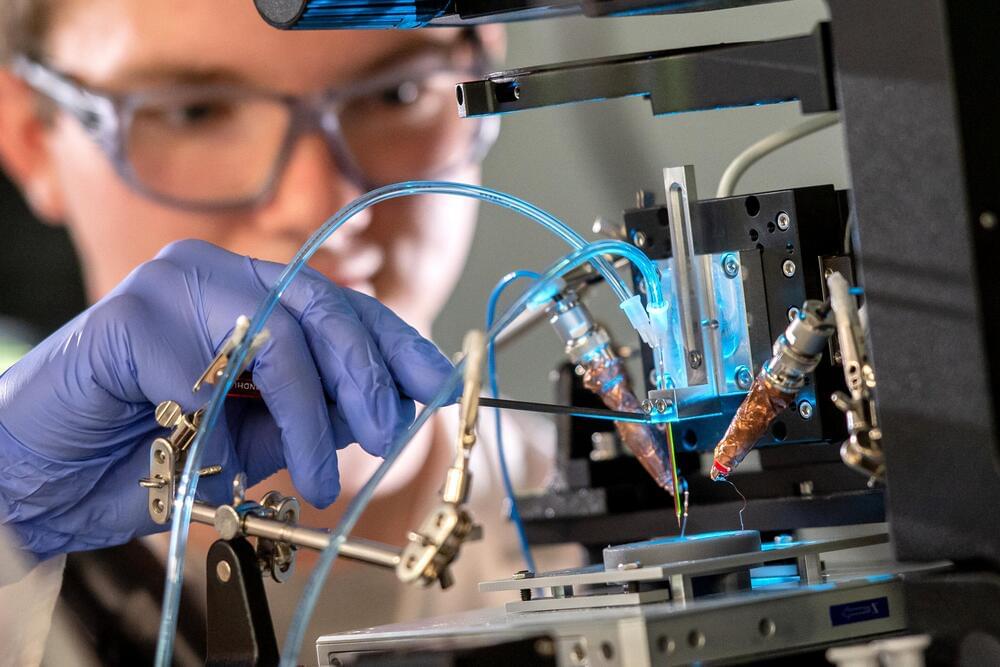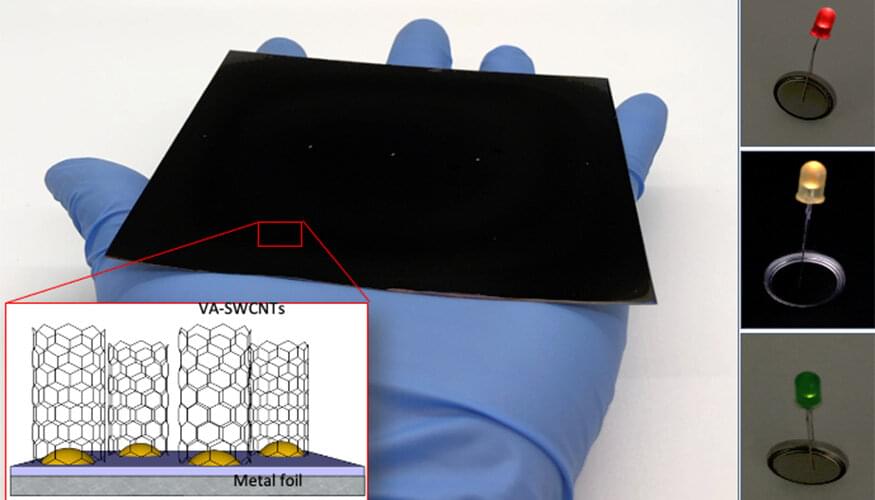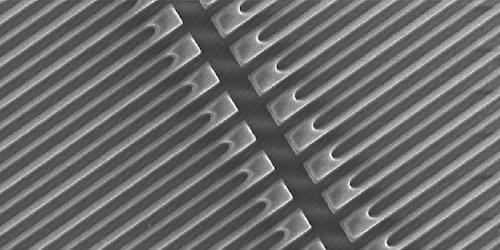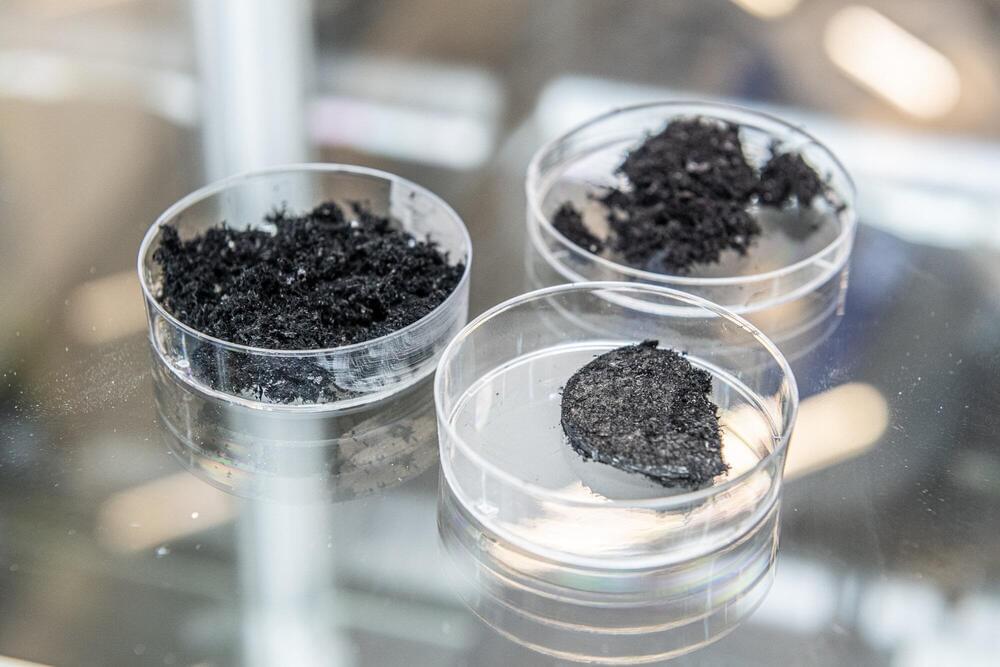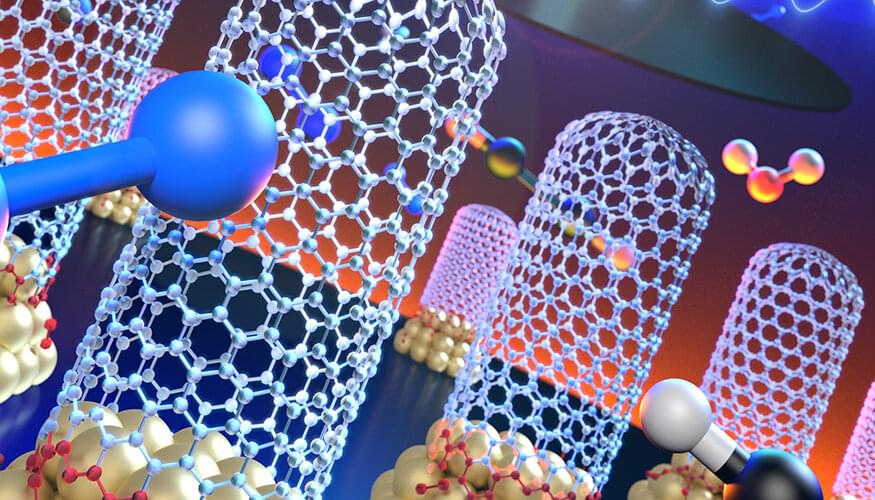Dec 18, 2022
Printing atom
Posted by Dan Breeden in categories: 3D printing, chemistry, nanotechnology
It takes chemist Liaisan Khasanova less than a minute to turn an ordinary silica glass tube into a printing nozzle for a very special 3D printer. The chemist inserts the capillary tube—which is just one millimeter thick—into a blue device, closes the flap and presses a button. After a few seconds there is a loud bang and the nozzle is ready for use.
“A laser beam inside the device heats up the tube and pulls it apart. Then we suddenly increase the tensile force so that the glass breaks in the middle and a very sharp tip forms,” explains Khasanova, who is working on her Ph.D. in chemistry in the Electrochemical Nanotechnology Group at the University of Oldenburg, Germany.
Khasanova and her colleagues need the minuscule nozzles to print incredibly tiny three-dimensional metallic structures. This means the nozzles’ openings must be equally tiny—in some cases so small that only a single molecule can squeeze through. “We are trying to take 3D printing to its technological limits,” says Dr. Dmitry Momotenko, who leads the junior research group at the Institute of Chemistry. His goal: “We want to assemble objects atom by atom.”
